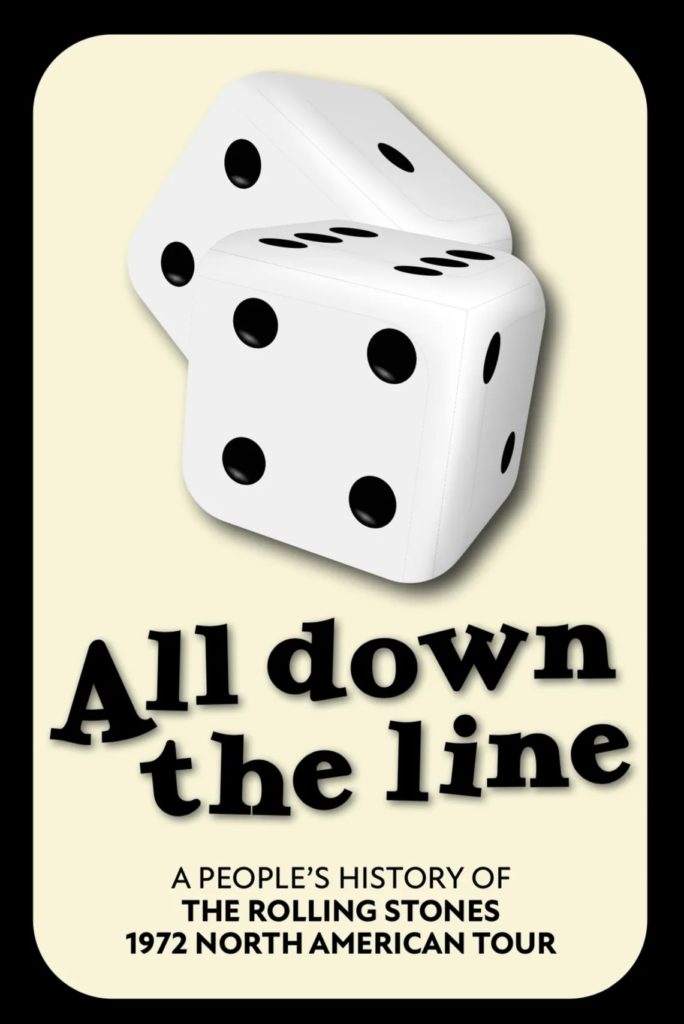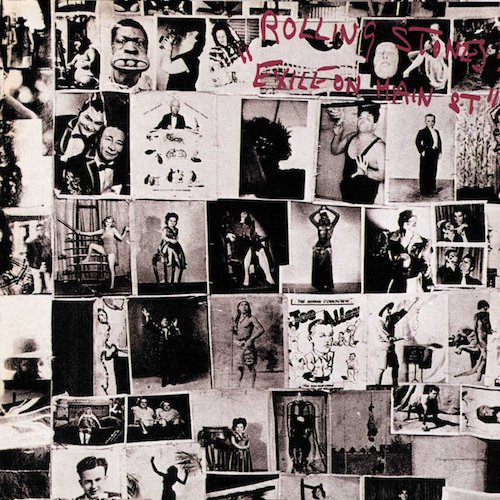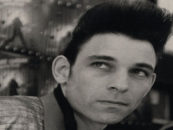 A new book about the Rolling Stones, All Down The Line—A People’s History of the Rolling Stones 1972 North American Tour, has been published marking 50+ years since this landmark trek and the release of their Exile on Main Street album. The book, published on Feb. 14, 2023, via Spenwood Books, tells the story of the 1972 tour in the words of over 300 fans.
A new book about the Rolling Stones, All Down The Line—A People’s History of the Rolling Stones 1972 North American Tour, has been published marking 50+ years since this landmark trek and the release of their Exile on Main Street album. The book, published on Feb. 14, 2023, via Spenwood Books, tells the story of the 1972 tour in the words of over 300 fans.
That year saw the Rolling Stones performing on American soil for the first time since December 1969, playing 48 shows in 32 cities in 54 days. The book includes previously unpublished eyewitness accounts of the tour, from opening night in Vancouver to the tour finale (and Mick Jagger’s 29th birthday) at Madison Square Garden.
The book’s author, rock historian Richard Houghton, said, “The insider’s take on this tour was covered extensively at the time, while filmmaker Robert Frank captured some of the madness on celluloid in Cocksucker Blues, which the Stones ensured never got a full cinematic release. But the other story, from the viewpoint of the fans, has never been told before. Until now.”
 In 1972, the Stones, producer Jimmy Miller and engineer Andy Johns returned to Hollywood after cutting the basic tracks for Exile on Main Street in the 16-room Villa Nelcotte in the South of France. Overdubbing and mixing sessions were done in Hollywood at Sunset Sound studios and then mastered at Artisian Sound Recorders on Sunset Blvd. “All Down the Line” was the first [song] that was finished,” recalled Johns in a 2009 interview.
In 1972, the Stones, producer Jimmy Miller and engineer Andy Johns returned to Hollywood after cutting the basic tracks for Exile on Main Street in the 16-room Villa Nelcotte in the South of France. Overdubbing and mixing sessions were done in Hollywood at Sunset Sound studios and then mastered at Artisian Sound Recorders on Sunset Blvd. “All Down the Line” was the first [song] that was finished,” recalled Johns in a 2009 interview.
“Mick got very enamored. ‘It’s finished! It’s going to be the single!’” Johns said. “I thought, ‘This isn’t really a single.’ I remember going out and talking to him and he was playing the piano. ‘Mick, this isn’t a single. It doesn’t compare to “Jumpin’ Jack Flash” or “Street Fighting Man.”’ He went, ‘Really? Do you think so?’ I thought, ‘My God. He’s actually listening to me.’ I told Mick, ‘I can’t hear it here. If I could hear it on the radio that would be nice.’ It was just a fantasy. Mick said, ‘Oh, we can do that.’ [They sent] Stew [pianist Ian Stewart] to the nearest FM radio station with the tape and said we’d like to hear it over the radio.
“Sure enough, we were on Sunset Strip and Keith is in one seat, and I’m in the back where the speakers are with Mick, and Charlie [Watts] is in there, too, just because he was bored (laughs). Mick’s got the radio on and the DJ comes on the air: ‘We’re so lucky tonight. We’re the first people to play the new Stones’ record.’ And it came on the radio and the speakers in this car were kind of shot. I still couldn’t tell. And it finishes.
Related: Behind the cover art for Exile on Main Street
“Then Mick turns around. ‘So?’ ‘I’m still not sure, man.’ I’m still not used to these speakers.’ ‘Oh, we’ll have him play it again then.’ Poor Stew. ‘Have them play it again,’ like they were some sort of radio service. It was surreal.” Exile turned out to be a great collection of music, and I think it was good that it was a double album. Some people say it should have been a single album but you get the feeling of what they were going through of the time and the confusion and the angst and the joy and the drugs [when] they moved out of England. There were a lot of emotions. It was heads down and work.
“My job on Exile on Main Street was to get the music out,” explained Marshall Chess, in a 2010 telephone interview. Chess was president of Rolling Stones Records from 1970-1978, and worked closely with the group. “It holds up very well. There’s alchemy there that made it a great record. I didn’t encourage them to make Exile a double album,” he added, “but I encouraged them to keep recording. Exile on Main Street is the greatest.”
Watch the Stones perform “Brown Sugar” live in 1972






1 Comment so far
Jump into a conversationI worked on 34th st across from MSG in 72. Got 4 tickets to see R.Stones in thier prime. Also impressed with the large funky Stevie Wonder band as opener. Tickets $7.50 on the floor. Those were the days !